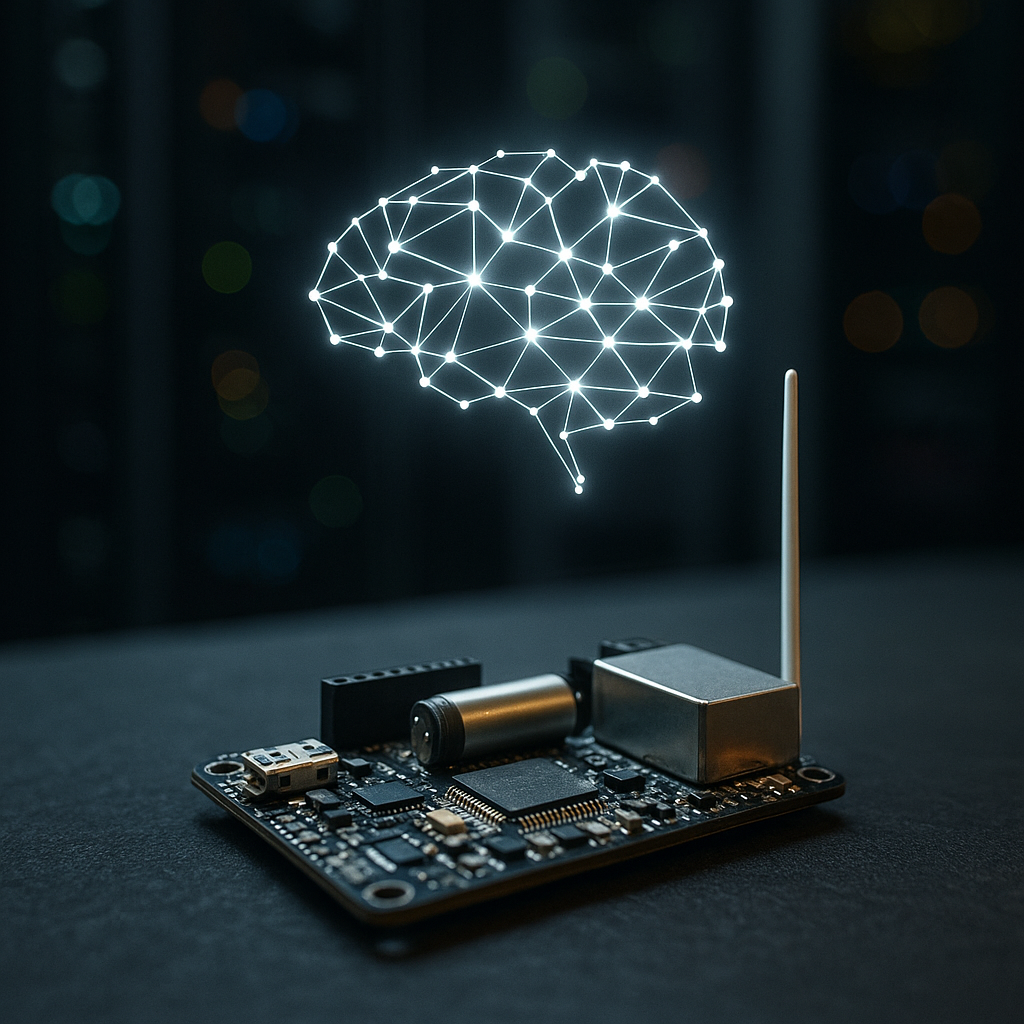Low-power, high-performance: Future of generative AI in IoT systems
As global IoT adoption expands, expected to exceed 30 billion connected devices by 2030, energy consumption has become a pressing sustainability concern. Generative AI, despite its transformative capabilities, traditionally demands extensive computing power that increases carbon emissions and operational costs. By enabling energy-efficient on-device inference, ’s framework positions AI as a driver of sustainability rather than a drain on resources.

Researchers have developed a next-generation framework that optimizes the use of generative artificial intelligence (AI) on low-power Internet of Things (IoT) devices.
The research, titled "An Energy-Aware Generative AI Edge Inference Framework for Low-Power IoT Devices," and published in Electronics, proposes a new architecture designed to make AI-powered IoT systems more efficient, sustainable, and scalable, bridging the gap between advanced generative models and the energy-constrained edge environments in which they increasingly operate.
Reimagining Generative AI for the IoT Era
The research addresses a key technological challenge: how to enable resource-intensive generative AI models, such as those used in predictive maintenance, anomaly detection, and real-time sensor synthesis, to run on IoT devices with limited processing power and battery life. While traditional AI frameworks rely heavily on cloud-based computation, these systems face bandwidth, privacy, and latency limitations that restrict their use in edge scenarios.
To overcome these constraints, the researchers developed a three-tier framework integrating lightweight model compression, adaptive quantization, and energy-aware scheduling. This design ensures that AI models can generate accurate and high-quality results without draining power resources or overloading local processors. The proposed system effectively shifts the balance between performance and energy efficiency, enabling IoT networks to perform autonomous inference while conserving energy.
The framework's architecture is structured around a multi-stage optimization process. First, deep neural network models are compressed through knowledge distillation and pruning, removing redundant parameters without compromising performance. Second, an adaptive quantization layer dynamically adjusts bit precision based on workload and energy availability. Finally, a reinforcement learning-based scheduler orchestrates inference tasks in real time, ensuring that each operation maximizes computational throughput while minimizing energy usage.
The authors describe this integration as a pathway toward "sustainable generative intelligence" - a system where AI models are self-regulating and context-aware, capable of adapting their own energy consumption according to the state of the device or application.
Performance gains through energy-aware optimization
The study's experimental evaluation demonstrates significant improvements over existing generative AI frameworks. Tested across benchmark datasets including CIFAR-10, Tiny-ImageNet, and IoT-SensorStream, the proposed method achieved up to 31% energy reduction and 27% latency improvement, outperforming standard edge AI baselines. Moreover, it maintained competitive accuracy and generative quality, proving that resource efficiency need not come at the expense of model performance.
A key insight from the research is that AI efficiency must be dynamic rather than static. By integrating adaptive quantization, the framework allows bit precision to vary according to operational context, using higher precision during critical inference tasks and lower precision when performance demands are reduced. This adaptability not only conserves power but also extends device lifetime, making continuous on-device intelligence viable for applications like smart cities, healthcare, and environmental monitoring.
In hospital-based IoT testbeds, the system demonstrated real-world utility by supporting patient monitoring devices capable of continuous data generation without reliance on external computation. The authors observed stable power consumption under varying workloads, indicating the framework's robustness across heterogeneous hardware platforms such as ARM-based processors and embedded GPUs.
The integration of reinforcement learning (RL) as a task scheduler further distinguishes this framework. By using RL agents to model the relationship between task allocation and power states, the system continually refines its decision-making through trial and error. This self-learning capability allows it to predict future workloads and energy demands, achieving a form of predictive energy management aligned with the broader goals of AI-driven sustainability.
Toward sustainable intelligence at the edge
As global IoT adoption expands, expected to exceed 30 billion connected devices by 2030, energy consumption has become a pressing sustainability concern. Generative AI, despite its transformative capabilities, traditionally demands extensive computing power that increases carbon emissions and operational costs. By enabling energy-efficient on-device inference, 's framework positions AI as a driver of sustainability rather than a drain on resources.
The study also points out the strategic importance of edge computing for privacy preservation and data sovereignty. Since sensitive information processed by IoT systems often cannot be transmitted to the cloud due to legal or ethical constraints, localized AI processing becomes essential. The proposed framework's capacity to operate autonomously at the edge addresses both privacy and energy concerns simultaneously.
From a systems perspective, the authors argue that the convergence of AI, IoT, and energy optimization will define the next phase of the Industry 5.0 revolution, an era focused on human-centric, resilient, and environmentally conscious technologies. They call for broader integration of adaptive AI mechanisms into industrial and public infrastructure to ensure that innovation aligns with sustainable development goals.
The paper outlines several directions for future research. These include exploring cross-device collaborative learning to distribute workloads across multiple IoT nodes, developing ultra-lightweight generative architectures tailored for microcontrollers, and incorporating renewable energy-aware scheduling into AI deployment frameworks. Such advancements would enhance scalability while further reducing the carbon footprint of AI-powered systems.
The study's real-world significance lies in its potential to redefine the economics of edge intelligence. By lowering energy costs and hardware demands, it democratizes access to generative AI, making it feasible for low-cost IoT devices deployed in developing regions or resource-limited settings. This democratization aligns with the global push toward decentralized AI ecosystems, where intelligence is distributed across networks rather than concentrated in centralized data centers.
- FIRST PUBLISHED IN:
- Devdiscourse





